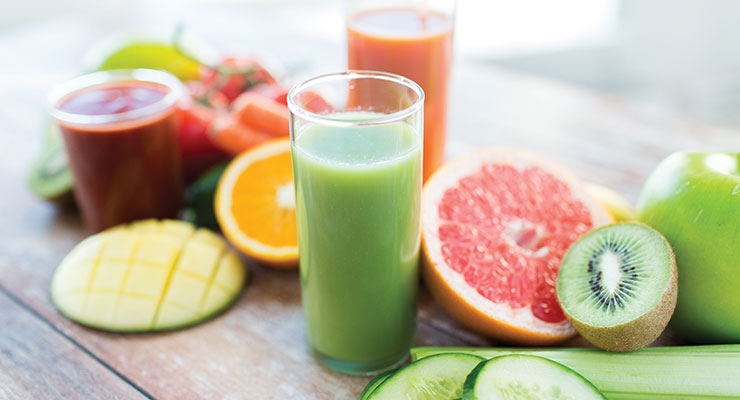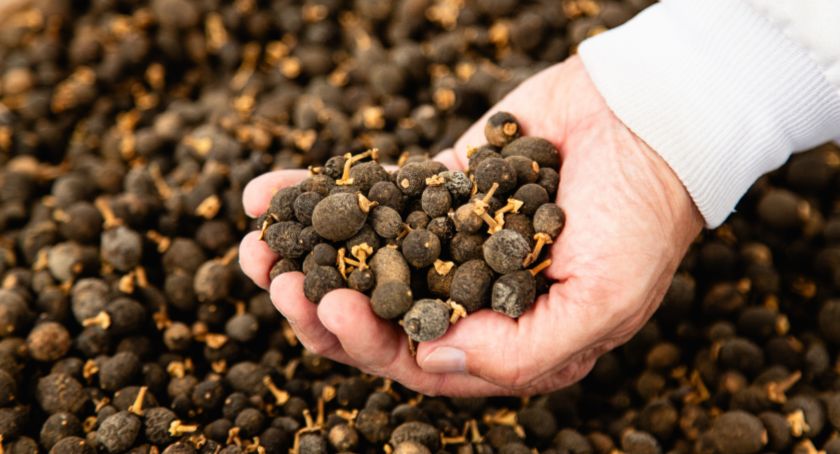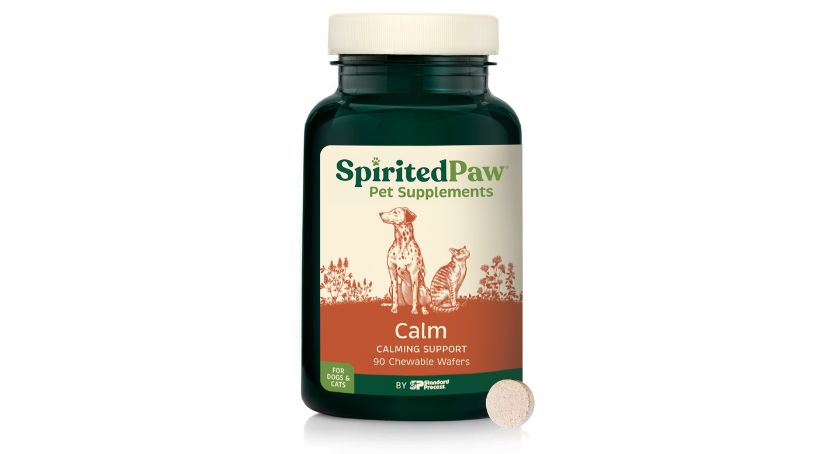Features
Healthy Beverage Market Overflowing With Opportunities
Clean and simple formulas that incorporate vital nutrients will continue to gain market share.

By: Sean Moloughney

Natural, functional and convenient products that can deliver nutritional benefits without sacrificing taste continue to tap into major trends currently driving the thriving healthy beverage market. According to recent analysis from market research firm Mintel, nutritional and performance drinks are becoming an increasingly popular meal option due to evolving dietary habits of on-the-go consumers and positive functional attributes. In fact, with one third (35%) of Americans agreeing that they do not take care of themselves as well as they should because of their busy lifestyle, 39% of consumers use nutritional and performance drinks as a replacement for breakfast, Mintel noted. Additionally, three in five (58%) consumers currently use nutritional and performance drinks as a meal replacement, and 48% consume them as part of a meal, up from just 20% who used nutritional drinks as a meal supplement in 2012. In addition to seven in 10 (69%) consumers agreeing that nutritional and performance drinks are a more effective source of nutrients, the majority of consumers agreed that they are more convenient (79%) than whole foods (e.g., fruits, nuts and grains). With consumers viewing their efficacy favorably, it’s no wonder that 40% are consuming nutritional and performance drinks before, during or after exercising. These drinks are also carving out their share of the snacking category, as 80% of consumers view these beverages as great guilt-free snacks. Nutritional Advantage Overall, nine in 10 (88%) consumers agreed that nutritional and performance drinks help them maintain a healthy lifestyle, according to Mintel. “The functional aspect of nutritional and performance drinks sets them apart from other drink categories at a time when consumers are looking for products that contribute to a healthy lifestyle,” said Beth Bloom, senior food and drink analyst at Mintel. “Nutritional and performance drinks are the apex of convenience for the modern American lifestyle and diet, as consumers are moving away from three meals per day and are snacking more often. These beverages deliver on convenience, affordability and efficacy, a trio of positive advantages that appeal to today’s on-the-go consumers who are simply too busy to eat a sit-down breakfast at home.” Driven by their favorable functional attributes, nutritional drinks and performance drinks are gaining a larger market share of the overall category, which also includes sports drinks and weight loss drinks. From 2010-2015, performance drinks experienced 86% sales growth, while nutritional drinks saw 67% growth, according to Mintel. The overall market grew 38%, reaching $13 billion in 2015. While sales of sports drinks grew 22% from 2010-2015, weight loss drinks experienced stunted growth (5%) caused by shifts in consumer dieting habits. Additionally, just 12% of consumers purchase weight loss drinks in comparison to the 32% of Americans who buy nutritional drinks. “General diet trends are favoring functional attributes, and we’re seeing this play out in the success of the nutritional and performance drinks category,” said Ms. Bloom. “This is further highlighted by stalled growth of weight loss drinks, which are often promoted with claims such as low-calorie or reduced sugar. Weight-loss brands should move away from ‘less bad for you’ positioning and instead highlight the ‘better-for-you’ functional benefits of replacing meals with their products, as a large amount of weight-loss drink buyers use them as meal replacements.” Despite being viewed favorably by consumers, other drink categories pose a threat to nutritional and performance drinks’ success. According to Mintel’s Global New Products Database (GNPD), from March 2015 to February 2016, 34% of energy drink launches in the U.S. featured a functional claim. Over that same span, functional positioning has also been utilized in new product launches of juice/juice drinks (24%), water (17%) and coffee/tea (16%). Overall, when purchasing nutritional and performance drinks, the most important factors for U.S. consumers are favorite flavor (41%), amount of protein (40%) and high fiber (33%). “Products across beverage categories have caught on to the value of functional positioning, which challenges nutritional and performance drinks at their own game,” Ms. Bloom concluded. “In order to stay ahead of the competition, nutritional and performance drink brands should prioritize promoting and substantiating efficacy. Brands could also secure more natural positioning by featuring competing categories’ whole foods, such as 100% juice, coffee and tea, as ingredients.” Tapping Into Consumer Preferences “Natural” has become a significant draw for healthy beverage consumers, despite skepticism around the term, according to Wayne Lutomski, vice president of international & Welch’s Global Ingredients Group, Concord, MA. “In tune with this, within the healthy beverage category, we’re seeing increased demand for products that are ‘naturally functional,’ driven by consumers who are increasingly looking to proactively manage their well-being with healthy lifestyle practices.” Ultimately, consumers are looking for high-quality beverages that taste good, are dense in nutrients and intrinsically wholesome, he continued. “Taste alone isn’t enough to satisfy many of today’s consumers. Instead, they are looking to make every calorie count by picking flavorful products that are free of the ingredients they don’t want (e.g., added sugars) and deliver authentic health benefits. Products such as Welch’s 100% grape juices fit that bill well. They taste great, and also Concord grape juice delivers health-promoting polyphenols—more than many other commonly consumed juices.” Ephi Eyal, president and CEO of Innovative Food Processors, Inc. (IFP), Faribault, MN, which conducts contract powder processing, cited three major trends driving interest in the powder beverage market and performance nutrition products. First, the clean label trend continues to gain momentum. “Consumers are looking for natural positioning and short, meaningful ingredient decks. Natural sweetener systems are top of mind, as are other natural and/or organic ingredients.” Second, products must deliver functionality, or purpose. “The mainstream market is becoming increasingly aware of functional ingredient benefits, especially protein,” said Mr. Eyal. “Consumers are looking for ingredients that provide ‘purpose,’ like satiety, energy or immunity, with protein leading the way. The diversification of protein sources beyond dairy and into plants is a powerful complementary trend.” Last, the “snackification” of everything has opened a further avenue for beverage products. “Drinking one’s breakfast—as well as other meals—is trending,” he added. “Consumers are looking for healthy drinks to replace tradition. Portability, convenience, satiety and natural are important components to the new generation of health and sustenance drinks.” Jackson Zapp, vice president of innovation, Applied Food Sciences (AFS), Austin, TX, also noted a clear driving interest in healthy beverages that don’t contain artificial ingredients. “Mintel has stated this is the number one consumer desire on packaged goods for 2016. This connects with our company’s mission to replace synthetic and artificial energy ingredients with botanical compounds.” Consumers are looking for various elements from their food and beverages, he added. “They want new flavors, and new exotic ‘super fruits.’ They want less sugar, fewer calories, and more natural ingredients. You can see the trends of clean label everywhere in beverages. Organic is growing at a significant rate as well because consumers clearly understand what certified-organic means. ‘Natural,’ on the other hand is more loosely defined, such that some consumers are skeptical, so we’re seeing a big movement toward organic. Consumers are more likely to associate healthy living with buying and drinking organic.” In marketing, cleaning up labels by using organic and natural ingredients is all about transparency of a product and building trust with the consumer, said Mr. Zapp. “Fortunately, if genuine, transparency should be really easy to demonstrate in marketing efforts. For AFS, we simply share the story of where our ingredients come from—our supply chain. Our customers can see for themselves the importance of quality control, sustainability and social responsibility. They can then share these values with the public, building life-long customers in the process.” Marketers often express a great deal of interest in determining which new flavors will attract consumers, noted Anton Angelich, group vice president, Marketing, Virginia Dare, Brooklyn NY. “What is apparently different and noticeable at this time is that companies developing new food and beverage products are less focused on what that newest, trendiest flavor will be. They see minimal shifts in recent years in the evolution of new, trendy flavors.” Flavors with healthy natural associations such as vanilla, tea, ginger, maple, raspberry, blueberry, along with indulgent flavors such as pumpkin pie, salted caramel and birthday cake, continue to lead the way in new flavor product launches, he added. However, “product developers are largely focusing on getting the product right.” In order to be successful in a competitive market, clean and simple formulas should only contain ingredients that your grandmother would recognize, said Mr. Angelich. Natural, organic and “free-from” (e.g., gluten-free, lactose-free, no artificial colors or flavors) products that contain efficacious ingredients proven to support health are all in demand, he added. “The ultimate key to new product success, though, is that the product must taste great, as taste remains the most important driver of food selection for 87% of consumers,” he said, citing data from Sloan Trends Inc., Escondido, CA. “The American consumer has a choice of over 42,000 SKUs in the typical supermarket. If a product does not taste great, they will never purchase the product again. There will be many other products they can choose from.” Challenges & Keys To Success Consumers are looking for real fruits and vegetables, as well as high quality protein in the healthy drinks they buy, noted Welch’s Mr. Lutomski. “These ingredients resonate because consumers have come to understand the important role they play in a healthy diet. The challenge is to provide these ingredients in a format that consistently delivers the nutrition consumers are looking for in a convenient and delicious form. It’s important to check all the boxes: taste, convenience and natural nutrition.” Overall, consumers’ expectations have changed the category, he continued. “Shoppers have become skeptical of the claims functional beverage brands make today. So, as a product manufacturer and marketer, the question you have to ask is: ‘am I using ingredients with benefits that are supported by sound science?’ If you want to develop a 100% fruit juice with heart-health benefits, for example, use juices that are backed by clinical research demonstrating those benefits.” Consumers’ needs have diversified, and nutrition is becoming more personalized, Mr. Lutomski added. Still, consumer interest in key benefits like heart health, cognitive function and natural energy has continued. “Consumers are looking for beverages that deliver relevant health benefits and have sound-science backing their claims. The real key to success is to create products that are rooted in research and that consumers can easily integrate into their daily routine.” Nearly 20 years of research shows that Concord grape juice helps support a healthy heart, he noted. Welch’s Global Ingredients Group also recently added to its product portfolio with 100% Niagara grape juice, a unique golden American juice that delivers a sophisticated flavor profile and naturally nutritious polyphenols. In terms of ingredients, IFP’s Mr. Eyal said vegetable proteins, fibers, prebiotics and probiotics are all in high demand, as well as natural, high-intensity sweeteners. “Many of these ingredients have their issues with solubility, dispersibility, taste/sensory characteristics,” he added. “Product developers work carefully with suppliers to find the right combinations of proteins and fiber to deliver on nutrition targets, and work with flavor suppliers to mask off-flavor notes, particularly of pea protein and other novel vegetable protein sources. The solubility and dispersibility of pea protein and other vegetable proteins can be enhanced through IFP’s process of agglomeration.” Utilizing natural, high-intensity sweeteners brings unique challenges as well, he added. “Some high-intensity sweeteners can come across as unpleasant, requiring bitterness masking flavors. Some have high peak sweetness early and fast, and therefore need to be combined with a second sweetener that can deliver a longer, more lingering sweetness. Our strong history of working with stevia-based sweetener systems helps us to find the right system for the right formula.” Combining functional nutrients, stabilizers, carriers, flavors, colors and sweeteners into an optimal powder blend can be a challenge to efficacy, performance and cost, Mr. Eyal continued. “Finding an expert powder process manufacturer that can increase overall performance by adding crucial functional attributes such as uniformity, flavor masking and stability helps ensure a product’s success. Our company focuses on technologies such as agglomeration, coating and micro-encapsulation. These processing technologies can provide advantages like enhanced solubility, dose control, masking of off flavors and colors and negative ingredient interactions.” Companies are often challenged by consumers who demand great-tasting yet healthy and affordable products, said Mr. Eyal. “At IFP, we believe a powder-based beverage has to look great, taste great and sound great. No matter what the functional benefit or added value, it has to meet the sensory characteristics that a consumer is used to, while having the next generation of health benefits that make it desirable, and the commercial and market viability to make it a success.” Partnering with an experienced contract-manufacturer can help reduce risk and increase time to market, he added. “Developing and manufacturing functional products with exceptional sensory attributes and clean label ingredients is a fine art. IFP has made it a priority to develop a strong understanding of trending ingredients and trending platforms so we can achieve the better-for-you ingredient label with the same great sensory appeal consumers have come to expect and enjoy.” Mr. Zapp with AFS noted growing interest among product developers for his company’s organic caffeine Purcaf, derived from green coffee bean, and PurTea organic green tea extract, as well as its AMATEA guayusa tea extract. “Guayusa is an Amazonian super-leaf known for its feeling of ‘focused energy’ due to its synergistic balance of polyphenol content and caffeine,” he said. However, many natural botanical ingredients can present formulation challenges, he continued. “Many botanical extracts are bitter or astringent, and will not dissolve fully in solution. At AFS we recognize these challenges; and through our years of expertise in extraction, we remove certain impurities, making our ingredients more water-soluble and with a more neutral flavor profile.” With growing demand for botanicals, companies are also challenged to find reputable and ethical sources of raw materials, Mr. Zapp added. “There is an opportunity for farmers around the world who are willing to do things the right way with transparency, social responsibility and sustainability in their farming practices. AFS has rigid standards for sourcing ingredients. There are many checks and balances and we audit our suppliers to ensure they are up to that challenge. It takes a lot of time and resources to travel the world for ethical sourcing, but AFS is dedicated to this principle and its implementation.” According to Virginia Dare’s Mr. Angelich, one of the greatest technical challenges today for the flavor industry is to develop flavor systems that deliver great taste to product formulations that contain healthy, efficacious ingredients. For example, products containing omega-3s, botanicals, greens, added vitamins and minerals, and alternative protein sources such as pea, whey, soy and hemp can often be unacceptable from a taste perspective among consumers. “Virginia Dare’s broad range of masking flavors, including natural and non-GMO options, can provide the perfect solution for overcoming unpleasant tastes in functional foods and beverages.” Virginia Dare, with a long history of working closely on masking unpleasant tasting actives for the pharmaceutical industry, has taken a leading position in the flavor industry in masking flavor technology. “In the course of decades of research and development, the company has developed an extensive portfolio of ingredient-specific masking systems, including the well known ProSweet and VidaPro product lines,” said Mr. Angelich. “Marketers are also faced with the perplexing problem of where and how to position their beverages,” he added. “Groceries and beverages just don’t come from the grocery store anymore. ‘Click vs. Brick’ has changed the delivery and supply of food and beverages in the U.S. significantly in the last few years. Beverages can be bought online from Amazon, or from weight management clubs and organizations, multi-level marketers, specialty websites, home food delivery companies like Peapod, and meal preparation services like Blue Apron—and additionally from mass merchandisers, big box stores, convenience stores, drug stores, gas stations, food courts, and health clubs and gyms.” New Product Spotlight The following is a sample of new nutritional beverages introduced over the past year that exemplify broader category trends. CytoSport, Inc., Benicia, CA, maker of Muscle Milk premium protein products, updated the nutritional profiles and redesigned packaging for the brand’s core line-up. These nutritional updates include simplified ingredient statements, the elimination of soy, reduced sugar and a 40% reduction in fat in its Genuine varieties. The brand also launched two new products: Muscle Milk Protein Smoothie yogurt shakes and Muscle Milk Coffee House protein shakes. The former are made with Greek-style yogurt while the latter feature coffee as a primary ingredient and deliver 20 grams of protein along with a caffeine amount similar to a cup of coffee. Suja Juice Co., San Diego, CA, a leading cold-pressured, organic and non-GMO beverage company, launched its new line of enhanced water made with organic fruits, vegetables and vegan probiotics. At 10 calories and 1 gram of sugar or less, Suja Pressed Probiotic Waters offer a subtle sweetness with no additives. Containing 2 billion colony-forming units (CFUs) of vegan probiotics, these waters provide a clean dose of immune and digestive benefits, according to the company. Suja Pressed Probiotic Waters are available in four flavors: Raspberry, Ginger Lime, Pineapple Lemon Cayenne and Orange Ginger Pineapple. Post Holdings, St. Louis, MO, launched PowerBar Protein Shakes made with 30 grams of protein, 2 grams of sugar and 160 calories. Available in Chocolate and Vanilla flavors, the shakes help rebuild muscle, replace a meal or can be used as a healthy snack on the go, according to the company. “For a long time, our products did not meet what athletes wanted,” said Doug Cornille, PowerBar vice president of marketing. “We’re changing that, and are improving all of our products to meet consumer demands for the right macronutrients, lower sugar, whole food ingredients, easy-to-understand labels and superior taste.” Bai, Princeton, NJ, debuted Bai Supertea, offering fruit-flavored, antioxidant-infused, brewed teas with 5 calories per serving and no artificial sweeteners. The line’s four flavors include Paraguay Passion Fruit Tea, Narino Peach Tea, Rio Raspberry Tea and Tanzania Lemonade Tea. Each variety contains 1 gram of sugar, 35 mg vitamin C, 100 mg polyphenols, and chlorogenic acid from coffeefruit extract and white tea extract, as well as natural caffeine (35 mg). Abbott Laboratories, Abbott Park, IL, has developed Ensure Enlive, a balanced nutrition drink designed to help consumers rebuild lost muscle and regain strength and energy. The product contains 20 grams of protein and HMB (beta-hydroxy beta-methylbutyrate). Ensure Enlive also contains plant-based omega-3 ALA, 3 grams of prebiotic fiber, 120% of the daily value of vitamin D and 50% of the daily value of calcium, and antioxidants like vitamins C, E and selenium. The product is available in Vanilla, Chocolate and Strawberry flavors. NextFoods, Boulder, CO, creators of the GoodBelly line of probiotic drinks, introduced GoodBelly Protein Shakes, which contain 15 grams of plant-based protein and 40 billion live and active probiotic cultures. Available in three flavors—Tropical Coconut, Green Power and Triple Berry—the product features Lactobacillus plantarum 299v (LP299V), which can withstand the stomach’s acidic environment, according to the company. Jamba Inc., Emeryville, CA, introduced its line of organic, non-GMO, ready-to-drink cold-pressed juice blends. Organic and non-GMO, the products are made with real fruit and 100% juice, with no artificial preservatives or flavors, the company said. The juices are available in select markets in six flavors: Tropical Greens, Citrus Breeze, Mango Limeade, Cayenne Limeade and Orange Reviver. Mamma Chia, Carlsbad, CA, debuted Mamma Chia Organic Chia & Greens, which combines chia seeds with kale, spinach, broccoli, spirulina, barley grass and wheatgrass. With low calorie counts from sugar, each bottle delivers 2,500 mg of omega-3s, 7 grams of fiber, 4 grams of protein, 25% RDA of vitamin A, and 95 mg of calcium. Chia & Greens is available in four flavors: Soulful Greens (cayenne and lemon), Love Greens (beet and ginger), Grateful Greens (kale and mint) and Joyful Greens (ginger and lemongrass). Functional Waters To Double By 2020 The global market for functional waters surged in 2015, rising by an estimated 12% in volume to 5.5 billion liters and 11% in value to $12 billion, according to a report from food and drinks industry consultancy Zenith International. The market is expected to double over the next five years, primarily driven by rapid growth in Asia-Pacific. The “2016 Zenith Report on Flavored Functional Water Innovation” identified nine key areas of focus for new product development initiatives since 2013: natural ingredients, natural sweeteners, diversified flavors, energy waters, beauty and wellness waters, vitamin waters, protein waters, innovative functionality and minimalist packaging. “Functional waters provide added benefits for health conscious consumers at a substantial price premium for the industry,” said Zenith Chairman Richard Hall. “The most common added ingredients are vitamins and minerals alongside herbs and fruit flavors. These are generally combined to provide a targeted package of taste, convenience and lifestyle with a well-being appeal.” Other points highlighted in the Zenith report included: Still water dominates the flavored functional water market, accounting for 90% of global volume. Consumption per person is highest in North America, Asia-Pacific and West Europe. China, the U.S. and Japan lead in terms of volume by country. The top three brands are Mizone from Danone, Glacéau Vitaminwater from Coca-Cola and Propel from PepsiCo.




















